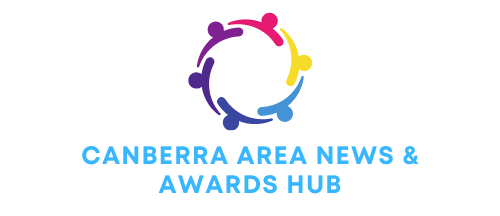Imagine walking into a trade fair, your eyes scanning the sea of stalls, each vying for your attention. Amidst the chaos, a well-designed brochure stands out, pulling you towards a particular stall. That’s the power of an effective brochure design. It’s not just a piece of paper; it’s a silent, persuasive salesperson.
In this digital age, I hear you ask, “Do brochures still matter?” Absolutely! A well-crafted brochure can bridge the gap between the digital and physical world, creating a tangible connection with your audience. Notions Design, a leader in brochure design, talks about how It’s about combining the right elements — compelling content, striking visuals, and strategic layout — to make your message resonate. For more information, visit notionsdesign.com.au.
Join me as we delve into the art and science of creating brochures that not only look good, but also work hard for your business. Let’s explore the secrets of effective brochure design together.
The Importance of Effective Brochure Design
Being able to create effective brochure designs bears immense importance in today’s business landscape. This stands vital not only to grasp attention at trade shows but also to establish a tangible bond with your target audience.
Understanding Your Audience
Demystifying the target audience paves the way to a successful brochure design. It enables understanding of customers’ needs, preferences, and problems, all of which can guide the design process. For instance, a brochure aimed at millennials might lean towards bold colours and informal language. Conversely, a brochure targeting senior citizens might need a larger print and clear, easy-to-read text.
The Power of Visual Appeal
In the brochure design process, leveraging the power of visuals can be a game-changer. As they say, a picture paints a thousand words – strategic use of colours, images, and typography can significantly elevate the effectiveness of your brochure. For example, using complementary colours can create harmony and balance, whereas high-quality images can tell your brand’s story instantly. Ultimately, the visual appeal of your brochure ought to connect with your audience emotionally, persuading them to take action favourably.
Key Elements of an Effective Brochure
Let’s delve deeper and discuss the components that elevate the effectiveness of a brochure. While a substantial impression precedes via visual cues, equally essential are engaging content, compelling graphics, and consistent branding.
Engaging Content
While sharp visuals catch the observer’s eye, it’s the content that keeps them hooked. Brochures serve to inform, and quality of information determines their success. Pertinent, concise information catered to an audience’s interests maximises engagement. An optimal blend of facts, figures, and storytelling sparks interest: a brochure covering tour travel destinations, for example, would combine historical statistics with captivating narratives about the local culture. Highlighting key services or products, encasing them within the narrative, generates focused engagement.
Compelling Graphics
Graphics act as visual anchors, anchoring attention and amplifying recall. Innovative, relevant graphic elements form the heart of a brochure’s effectiveness. A graphical blend that complements the content reinforces message assimilation. For instance, a brochure about environment conservation can employ infographics showcasing statistics on deforestation alongside images reflecting the beauty of nature, thereby strengthening the verbal message with visual impact.
Consistent Branding
A brochure represents the brand; therefore, brand consistency becomes paramount. Features like logos, colour themes, and taglines form distinct brand signals, aiding in overall brand recall. Take a corporate brochure, for instance. It’d prominently display the company logo, consistently employ the brand colours, and feature the brand’s signature tagline. These components, repeating throughout the brochure, form a cohesive viewing experience that solidifies brand identity. Consistent branding doesn’t just represent a brand, it resonates with the observer, embedding brand perception.
Design Techniques for Professional Brochures
Following our discussion on the importance of effective brochure design, let’s delve into some specific design techniques that can elevate your brochures. Mind that these techniques aim to maximise visual impact and reader engagement, without compromising on the information attribute.
Layout and Flow
When it comes to brochure design, a well-thought-out layout greatly influences its effectiveness. I begin with a clear structure, ensuring logical placement of text and images. Use ample whitespace, it not only creates a clean, uncluttered look but also directs the reader’s attention to key information. Organise brochure content in a hierarchical manner, with the most critical points making the prominent first impression. Additionally, employ consistent alignment, for example in placing text boxes, to maintain a neat appearance. Remember that easy-to-follow flow facilitates the reader’s journey through the brochure.
Colour Scheme and Typography
Moving on to colours and fonts, they’re not just a mere design aspect. They carry a deeper significance in strengthening brand identification and defining mood. Choose colours that reflect your brand’s identity, yet remember to balance bold shades with softer tones to avoid overwhelming the reader. Make sure there’s sufficient contrast between background and text colours for legibility.
Equally important is typography. In selecting fonts, readability takes precedence. It’s advisable to limit the number of fonts to create a unified look. Contrasting typefaces, when applied thoughtfully, can highlight different parts of the text like headers, sub-headers, and body content. Keep in mind, though, the font’s style should align with the brand’s persona. A tech company, for instance, might opt for a modern, clean typeface, while a vintage bookstore might prefer a more traditional, classic font.
Tools and Software for Brochure Design
Creating a high-impact brochure necessitates the use of specific tools and software. These solutions enhance design quality, ease the design process, and provide options for customisation. Let’s explore some of the professional design software and online templates and tools available.
Professional Design Software
Professional design software offers a comprehensive suite of tools for brochure design. Adobe InDesign, as an example, provides extensive layout and typesetting options. It lets you create multi-column pages with sleek typography and rich graphics. Adobe Illustrator, known for its powerful vector editing features, enables intricate, personalised designs. CorelDRAW is another robust platform, revered for its suite of tools and user-friendly interface. These software applications incorporate colour management systems, typography tools, and capabilities to handle large graphical files, ensuring fine-tuned, high-quality results.
Online Templates and Tools
If you’re seeking a more straightforward solution, online templates and tools could serve your needs. Canva, for example, boasts a massive library of pre-designed brochure templates, facilitating quick, easy designs. Lucidpress, a cloud-based design platform, allows for easy collaboration and offers a range of templates. DesignCap is also an excellent option, particularly for smaller businesses or solo entrepreneurs, with its library of templates and lean, intuitive design capabilities. These online tools streamline the design process, offering scalability without the need for significant design training.
Evaluating Brochure Effectiveness
Sure, design aspects and tools significantly impact a brochure’s aesthetic appeal. But, moving beyond the physical design, let’s unfold how to evaluate a brochure’s effectiveness in achieving your communication and marketing goals.
Gathering Feedback
Feedback, I believe, works as a powerful tool to measure the success of a brochure. Feedback primarily comes from your audience, the real consumers of the information present in your brochure. I’d suggest developing a feedback mechanism using customer surveys or feedback forms, designed specifically to gather information regarding the brochure’s reception. Questions can focus on clarity of information, visual engagement, comprehension ease, and more. By aggregating responses, you get insights into the success of your brochure and any areas demanding improvement.
For instance, responses indicating confusion over the brochure’s message deliver a clear sign of missed target communication. At the same time, an overwhelmingly positive response to visual elements provides evidence of a successful design strategy.
Measuring ROI
Calculating the Return on Investment (ROI) directly indicates the effectiveness of a brochure. Primarily used in the financial realm, the ROI concept holds equal importance in assessing marketing tools like brochures. Here, the investment refers to the cost incurred in designing and printing the brochure, while the return is the new business or sales it generates. A positive ROI, in this context, indicates the brochure’s ability to attract and engage potential customers, leading to profitable actions.
For example, if the total cost of producing a brochure amounts to £500 and it results in the generation of £1500 worth sales, the ROI would be 200%. This clearly demonstrates the efficacy of the brochure in fulfilling its objective.
Together, feedback gathering and ROI calculation pave the way towards accurately assessing a brochure’s effectiveness, shedding light on its strengths and highlighting areas needing refinement or a complete overhaul. Ensuring every brochure plays its part as an asset contributes to the overall marketing strategies and, ultimately, the success of your business.
FAQs
1. What should be the focus of a brochure’s cover design?
The cover should be eye-catching and informative, featuring a strong headline, engaging visuals, and your brand’s logo to attract and inform potential readers immediately.
2. How important is the layout in a brochure design?
A well-organised layout is crucial. It ensures information is presented clearly and logically, guiding the reader through the content smoothly.
3. What role do visuals play in brochure effectiveness?
High-quality images and graphics enhance visual appeal and help communicate the message more effectively, making the brochure more engaging and memorable.
4. How can the use of colours impact a brochure’s success?
Colour schemes should align with your brand identity and evoke the desired emotions. Consistent and thoughtful use of colour can draw attention and enhance readability.
5. Why is the choice of typography important in brochure design?
Typography affects readability and the overall aesthetic. Selecting fonts that are clear and consistent with your brand helps convey professionalism and clarity in your message.

